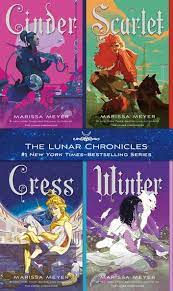Exploring the World of Fairytale Retellings
- Jordan Guerrero
- Aug 5, 2021
- 3 min read
Fairy tales? Like “Hansel and Gretel” or “Snow White and the Seven Dwarfs?” Well, yes and no. The fairytale retellings genre often uses the original tales as the base layer, and then authors usually expand from there.

What counts as a fairytale retelling?
It’s argued that in order for something to truly be a retelling, it must veer away from the original source material while still honoring what was initially there. Disney is best known for its movies inspired by classic fairy tales, such as “The Little Mermaid” or “Cinderella.” Disney veers away from the original source material by changing the form of media (being that most of their fairy tales are told through animated movie musicals or animated feature films), and the plot to be more kid-friendly. Surprisingly, even the stories that we consider classics today were already retellings of a previous narrative. Some believe that Disney produces the original tales, when in actuality, they are sugar coated retellings of the original stories.
Retellings don’t have to stick to the original medium of written-word fiction. Most modern retellings consist of musicals, stage plays, television shows, and the ever-so-popular movie musical. Other examples of fairy tale retellings on screen are the ABC series Once Upon A Time, Another Cinderella Story (there are countless), Into the Woods (Broadway Musical), and many many more.
Retellings don’t have to stick to the original plotline of the story; they can be sequels or prequels that expand upon what was already there. “Maleficent” and its sequel, “Maleficent: Mistress of Evil,” expand upon the Sleeping Beauty story and give a background on the iconic Disney villain.
Why is the fairytale retellings genre important?
Other than showing the many different possibilities a story can give, how are fairytale retellings beneficial for everyone? The fairytale retellings genre offers multiple scenarios and different perspectives on one situation or one story, meaning that it makes you realize that in order to get the big picture, you have to look from several different perspectives. In this case, rather than just look at the story through the hero or the protagonist’s point of view, fairy tale retellings can come from the point of view of the villain, the sidekick, or from one of the characters we don’t get to see much of in the original tale.
To young children, this can introduce the idea that in order to get the big picture, they have to consider many different angles and opinions.
My Recommendations
Here are some of my favorite fairy tale retellings book series!

After the death of their father, twins Alex and Conner Bailey stumble upon a magical fairy tale book that brings them into the world of the fiction they grew up reading. At first, they’re ecstatic about getting to see all the places that they could only visit in the tales they read, but they soon realize that they’re trapped. They must find a way to their home world by journeying to all of the fairytale landmarks, and by using their knowledge of the fairytale world to collect objects that could potentially bring them home.

“Sophie has waited her entire life to be kidnapped.” The first line says it all. Sophia and her best friend Agatha are taken to the School for Good and Evil where they’re trained and taught to live through their very own fairytale. However, reading about fairy tales and living through one is very different, and dangerous, as Agatha and Sophie soon come to realize.

16-year-old Cinder is the best mechanic in New Beijing, and also a cyborg. Living with her stepmother and two stepsisters, she’d gotten used to a life of discrimination and disappointment. That is, until Prince Kai secretly visits her booth to see if she can fix his android. She gladly accepts, and in the process of fixing the android, discovers secrets about where she came from, information the android was carrying, and the shocking truth about how she became a cyborg.




Comments